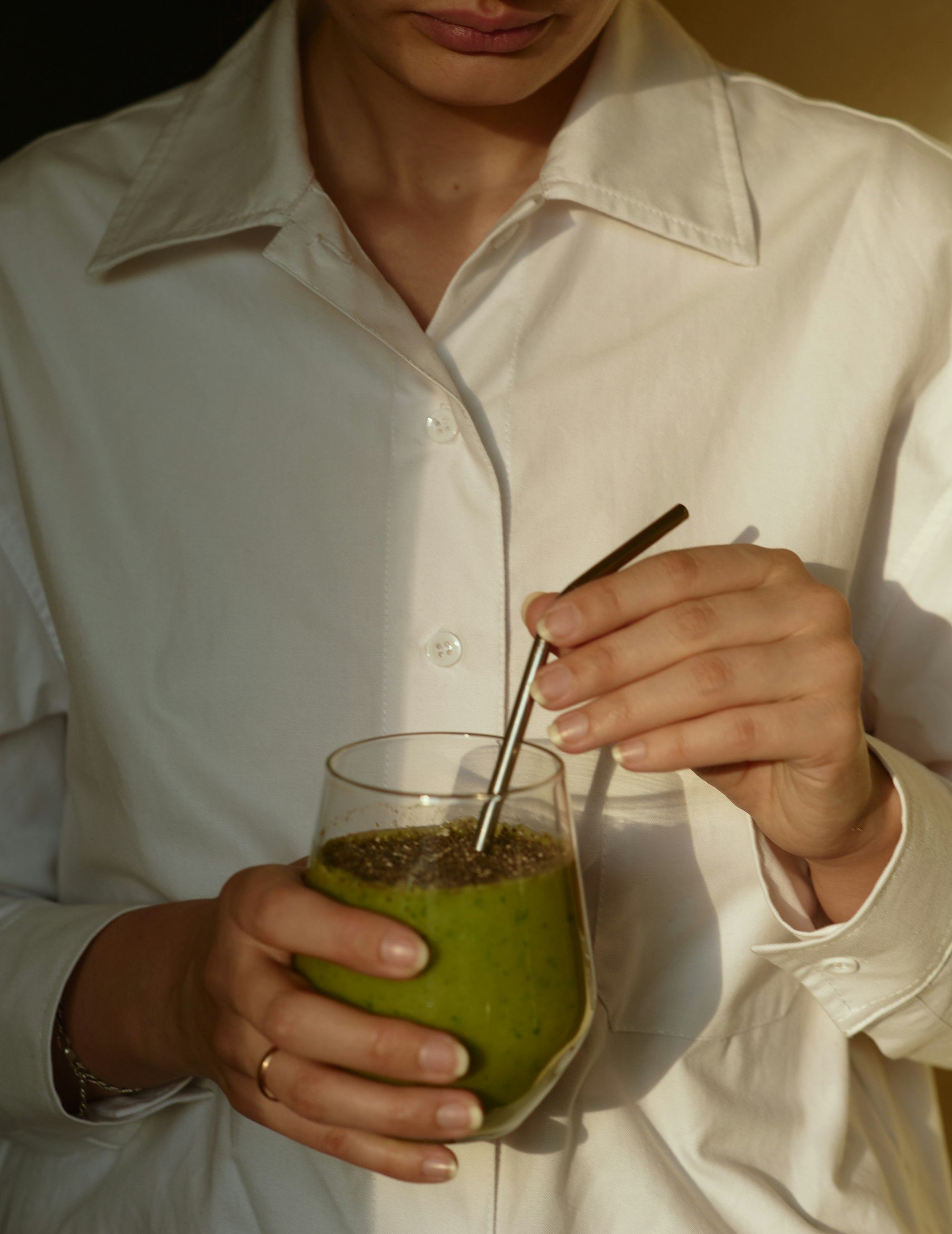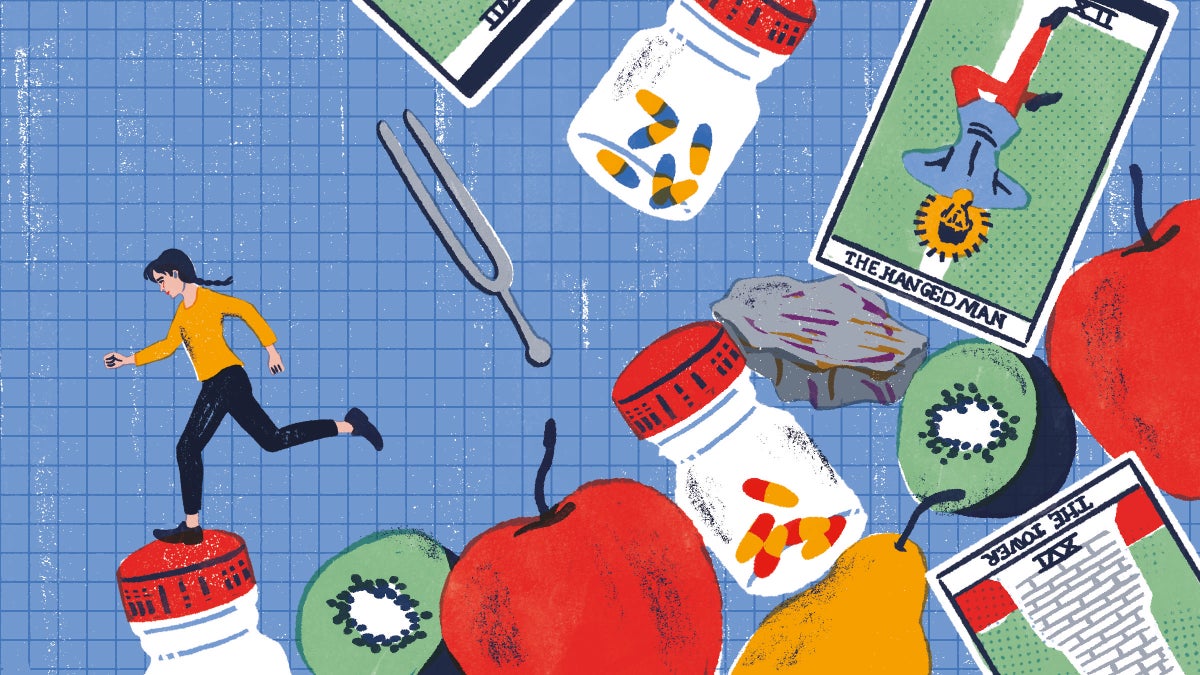
Some of you will love me, some will hate me. Either way, this needs to be said
If you're in the Wellness Industrial Complex, selling things like cryotherapy or ice baths or any one of a million so-called wellness fixes, this is not your article.
If you are in the market for a better level of wellness, this might be your article. Kindly, though, there is homework to be done here, and that's part of what I'm offering.
First, background. I've partaken of my fair share of highly questionable "cures" and wellness fixes more times than I want to admit. Much of what I bought didn't work, as most of it is based almost entirely on the expectation effect (Please see the book of that name if you really want to understand how charlatans separate us from our money).
Most of the so-called cures are placebos, and depend on our gullibility and the desperate desire to justify the funds we invest in fixing ourselves. Once we've invested a bunch, most of us don't want to admit we got duped. But duped most of us are.
Now that I'm 70 and have been pretty fit for a while, and have been separated from plenty of funds in the previous decades, I can speak to some of this from personal experience.
To be fair to the industry, there are plenty of things which do work- including some simply because we believe they will. I am addressing those often very expensive and fake fixes which have no basis in science and end up costing all of us a fair bit of money but without any real results.
The first issue I ran into which gave me reason to believe that most folks have no clue what they're talking about is the much-ballyhoo-ed and now much-debunked RICE protocol.
Originally pushed hard by Dr. Gabe Mirkin and pushed further by his book, this protocol is dead in the water just like the BMI. Mirkin has now publicly recanted hard.

There is now way too much solid research to prove that icing after an injury is for the most part not only a bad idea but it can prevent healing as well as damage tissues. After all, this miracle called our body knows precisely what it's doing when it swells, and icing throws up roadblocks to the very healing process we desperately need.
I've not iced for years, but for rare occasions. That's because I'm a bona fide hemophiliac, and my swelling is spectacular. A little goes a long way, and besides, I use Rock Tape to secure the injured part and usually keep right on going, which is now what's recommended, of course depending on the injury.
As in, if you have compound fracture, likely not a good move.
But you can't tell that to all those NFL and MLB players who still ice, and for whom all those icy protocols (think LeBron James) make a lot of folks money but don't deliver the goods. Here is a perfect example of the silliness that erupted out of the LeBron James ice baths:

This article is full of all kinds of claims, including links to research. But before you gotta be like LeBron, beware.
But this is just the tip of the iceberg, pardon the pun.
We are surrounded by all manner of fixes, fakes and flummery masquerading as ways to recover after all that intense exercise that the vast majority of us don't bother to do, just saying. Even so we think we gotta have that Gatorade (full of sugar and electrolytes, a fancy word for salts) or that Clif bar, because we just worked SO hard on our five block walk to get Fluffy some air.
That's how we keep gaining weight even as we are trying to take it off. Stay with me here.
I'm currently reading Good to Go, What the Athlete in All of Us Can Learn from the Strange Science of Recovery by Christie Aschwanden.
In a review for Faster Skier, Rachel Perkins writes:
In “Good to Go: What the Athlete in All of Us Can Learn From the Strange Science of Recovery”, Christie Aschwanden presents the findings of an in-depth look at the research (or lack thereof) behind the leading players in the industry of athletic recovery. Her analysis includes everything from electrolyte drinks to cryotherapy chambers to massage. She leaves the reader with a healthy dose of skepticism and perhaps a bit of reprieve from the hype surrounding the recovery obsession. Peppered with relatable anecdotes from her own experience as both an elite and recreational athlete, “Good to Go” is a worthy read for any competitor from master blaster to elite.
and,
“First is the ‘feels so good’ bin,” Aschwanden explained in the eleventh chapter. “These are the things that feel good while you’re doing them, and perhaps afterward too, which even if it does nothing else, provides a valuable benefit in itself. Next is the ‘hurts so good’ bin, with things like icing that are painful, and thus give the sense that they must be powerful (and therefore effective). Third is the ‘it’s working, I can sense it’ bin of active placebos, with things like cupping, which produce noticeable sensations and effects that aren’t necessarily painful nor alluringly pleasant. Finally, there’s the ‘blinded by science’ bin of things like infrared saunas, whose appeal comes from jargony scientific explanations that give them an aura of space-age power.” (author bolded)
This solidly-researched book provides us with the history behind Gatorade and how athletes over-hydrate to the point of death during endurance races, how PowerBars and Clif got their starts, and how we have now ended up with a plethora of highly-questionable offerings which may, or mostly may not, do much good.
The point is to be careful what you believe, and if you can't find solid research to back up claims, don't get suckered into very expensive fixes which are too often just fads.
While I am hardly at Aschwanden's athletic level, I have hiked some very large mountains, trained like a banshee and needed serious recovery after some particularly difficult adventures.
One method that I did use, and loved, and apparently so did Aschwanden, were the flotation tanks or sensory deprivation tanks. I didn't credit those experiences with anything other than precisely what they offer: a way to shut out the world, float for a while, and enjoy supreme quiet.
That alone can do a body a whole lot of good, but it's not going to bring us world peace or iron our Superman cape for us.
I also believe in chiropractic care and massage, the latter for the same reasons Aschwanden appreciates body work. There is no question that such work is emotionally and physically satisfying for many, and that is healing enough at times.
We are all so hungry for human touch that both chiropractic and massage as well as a number of other kinds of body work provide the kinds of connections that soothe in ways we may not yet truly understand. But those aren't fancy shakes or magical stones you put inside your vagina.
Recovery in most cases is quite simple. We are designed to recover without any of the ridiculous fixes and flimflam that Western society conjures up. After all, our distant ancestors didn't have blenders for shakes, supplements and all the other silliness which promise magical cures. They exercised, ate what was available and worked together as a society. More on that later.
The other writer whose work I particularly respect is performance expert Brad Stulberg. I loved this article from Outside Online:

One of my fave quotes:
...ignore diets and supplements and, instead, just aim to cut out junk like processed and fried foods. A study that was just published in the Annals of Internal Medicine reviewed data from hundreds of clinical trials involving nearly a million people and found that 16 of the most popular supplements and eight of the most popular diets have virtually no benefit—and some cause harm.
Like the false belief that icing an injury is a good idea, lots of diets and supplements can do real harm.
If you want a real eye-opener, and those of you in this business may be licking your chops, read this:

Business is booming, especially the "anti-aging" nonsense, which is up my alley and up my nose because there is no such thing. But you can't stop the marketing machine nor the lemming-like rush to false promises.
The research does NOT bear out the incredible, ridiculous, side-show circus barker claims that so many people make about their products. Worse, we can create real harm when the real issue, which Stulberg points out, is that we are not taking care of the basics. All that crap that you can buy from Goop- and it is mostly crap- will not fix you if you refuse to take responsibility for your body, your brain, your heart and your spiritual life.
Additionally, paying thousands for such fixes only makes us really, truly ridiculous.
Basics? Kindly. How many times we gotta say these?
Move more.
Stop eating junk products that aren't real food.
Create a healthy social community which tends to the heart, supports your growth and engages you in life.
Have a reason to lace up your sneakers every day.
Stulberg lists more, but those are the legs of the stool. If you and I would mind those, for the most part we wouldn't need the Wellness Industrial Complex pressing nonsense products and nonsense cures onto the gullible. And we're all gullible because our much-abused bodies scare us when they stop working.
We're genuinely scared - who wouldn't be- when our bodies skew sideways and suddenly just go haywire.
They stop working largely because we make poor choices. Change the choices, change the outcomes, and keep the change you would otherwise spend on silly fixes you never needed in the first place.
Again, if you're in the wellness business, this isn't your article. We would all be so much well-er (sorry) if we spent more time in nature. If we got off our devices and spent more time with loved ones. If we ate real food and quit the junk.
But that doesn't sell stupid products and cures.
Here's to hard-won wisdom. Do your research. If it sounds too good to be true....
you know the rest.

Dear Walkabout Saga Reader:
Thank you so much for taking a few minutes out of your life to read my work. WalkaboutSaga is an act of love and devotion, and I hope that you found value in it.
If my work appeals to you, may I kindly invite you to consider joining those Patreon supporters whose generosity keeps the gas in my tank as it were.
Such articles take time, resources, research and effort. Even a small amount of support truly helps me keep this going. In challenging times, I recognize that even a small amount is hard. Those who can give, I appreciate it. Those who cannot, I hope my words are helpful.
My purpose is to Move People's Lives. I can do more of that with your help.
Thank you.
You can explore that option here.
However you decide to partake of my writing, again, thank you.


Comments powered by Talkyard.